Grocery Guides
35 Types of Cheese: Uses, Flavors, Pairings & More Explained

The world of cheese is a vast and delicious landscape, offering a seemingly endless variety of flavors and textures. From the mild and creamy comfort of mozzarella to the sharp and complex tang of aged cheddar, there’s a type of cheese that has the power to elevate any dish or create a delightful standalone snack.
Whether you’re a seasoned cheeseboard connoisseur or a curious newcomer just starting to explore the dairy aisle, navigating this ingredient can be overwhelming.
Don’t fret — we’re here to simplify your journey by providing a breakdown of different types of cheese. We’ll delve into their flavor profiles, textures and ideal uses, equipping you with the knowledge to navigate the cheese aisle with confidence. So, ditch the confusion and get ready to discover your perfect cheese match!
Table of contents
- American
- Asiago
- Blue
- Bocconcini
- Brie
- Burrata
- Camembert
- Cheddar
- Colby
- Colby-Jack
- Cotija
- Cottage Cheese
- Cream Cheese
- Edam
- Emmental
- Feta
- Fontina
- Goat Cheese (Chevre)
- Gouda
- Gorgonzola
- Gruyère
- Halloumi
- Havarti
- Manchego
- Mascarpone
- Monterey Jack
- Mozzarella
- Muenster
- Parmesan
- Pecorino Romano
- Pepper Jack
- Provolone
- Ricotta
- Swiss Cheese
- Queso Blanco
American

American cheese is a blend of different types of cheese, including cheddar and Colby. This blend contains milk byproducts to make it extra melty without turning greasy or separating –– that’s why it’s commonly used for burgers and ultimate grilled cheeses.
Flavor profile: Mild, salty, creamy
Texture: Smooth, soft
Color: White, yellow or orange
Common uses: Grilled cheese sandwiches, cheeseburgers, mac and cheese, snacks
Country derived from: Switzerland
Asiago

Asiago is a versatile Italian cheese made from cow’s milk. It comes in two main varieties: young and aged. Young Asiago has a mild, nutty flavor with a crumbly texture. It makes for a great salad topping and addition to pasta dishes—it adds a hint of creaminess without overpowering the other ingredients. Aged Asiago becomes sharper and harder, perfect for grating over pasta or enjoying on its own.
Flavor profile: Mild (young), sharp (aged), nutty
Texture: Crumbly (young), hard and granular (aged)
Color: White or light yellow
Common uses: Salads, bagels, pasta dishes, grating, cheese boards
Country derived from: Italy
Blue

Blue cheese is a unique cheese known for its distinctive veins of blue mold, which contribute to its strong aroma and sharp, funky flavor. It’s an acquired taste, but blue cheese offers a complex and exciting flavor experience for those who appreciate it.
There are many varieties of blue cheese, each with its own personality. Roquefort from France is a classic blue, known for its intense flavor. Gorgonzola from Italy tends to be creamier, while Stilton from England pairs well with port wine.
Flavor profile: Sharp, pungent, nutty, funky (varies by variety)
Texture: Creamy, crumbly, or semi-soft
Color: White with blue-green veins
Common uses: Salads, burgers, pasta sauces, cheese boards (add a small amount for a flavor boost!)
Country derived from: Various regions including France, Italy and England
Bocconcini

Bocconcini (meaning “little bites” in Italian) are small, fresh mozzarella balls. Made from cow’s milk, they have a milky flavor and a soft, elastic texture. People commonly eat Bocconcini fresh in salads, for example, Caprese salad. They can also be used in pasta dishes or simply enjoyed on their own––some people enjoy melting them down and indulging in the sweet, buttery flavor. Try a drizzle of olive oil and a sprinkle of fresh herbs for a tasty snack.
Flavor profile: Mild, milky, slightly sweet
Texture: Soft, elastic, slightly chewy
Color: White
Common uses: Salads (especially Caprese!), pasta dishes, appetizers, snacking
Country derived from: Italy
Brie

Brie cheese is a luxurious indulgence, hailing from the Brie region of France. This soft-ripened cheese boasts a bloomy rind (the white, fuzzy exterior) that complements its rich, creamy interior. Brie’s flavor profile starts mild and buttery when young, developing a deeper, more complex flavor with earthy and nutty notes as it matures.
The beauty of Brie lies in its versatility. Spread it on crusty bread for a simple yet divine appetizer. Bake it for a warm and gooey treat. Or simply enjoy it on its own, perhaps with a glass of wine and some grapes.
Flavor profile: Mild and buttery (young), richer with earthy and nutty notes (aged)
Texture: Soft and creamy, with a bloomy rind
Color: Soft, pale yellow
Common uses: Appetizers on bread, baking, cheese boards
Country derived from: France
Burrata

Burrata is a close relative of mozzarella, but it has a surprise inside! This delightfully fresh cheese from southern Italy is made with cow’s milk curd and whey. The magic lies in the pouch-like construction: the outside is mozzarella, while the inside is a creamy stracciatella blend of mozzarella shreds and fresh cream.
Burrata boasts a milky, slightly sweet flavor with a luxurious, soft texture that explodes with creamy goodness when you cut into it. This pale ivory cheese is best enjoyed fresh and at room temperature. Serve it with sliced tomatoes, fresh herbs and a drizzle of olive oil, or pair it with bread for a delightful appetizer.
Flavor profile: Milky, slightly sweet
Texture: Soft, creamy
Color: Pale ivory
Common uses: Appetizers, salads, bread accompaniment
Country derived from: Italy
Camembert

Camembert is a dense, soft-ripened type of cheese from France, often compared to its close relative, Brie. While they share some similarities, Camembert has a distinct personality. This pale yellow cheese features a bloomy rind, similar to Brie, but with a slightly stronger aroma and a richer, earthier flavor profile.
Camembert’s texture is also creamier and ripens more quickly than Brie. It’s best enjoyed when the rind becomes slightly soft and the cheese becomes gooey and spreadable. Enjoy it on crusty bread, baked until warm and melty, or simply savor it on its own.
Flavor profile: Rich and earthy
Texture: Soft and creamy
Color: Pale yellow
Common uses: Eaten by itself, spread on bread, or baked until melted
Country derived from: France
Cheddar

Cheddar cheese, hailing from England, offers a flavor and texture for every cheese lover. Younger cheddars are mild and sweet, perfect for beginners and melting into gooey grilled cheeses. As cheddar ages, it transforms into a sharper cheese with hints of caramel and nuttiness. The texture becomes firmer and crumbly, sometimes even developing delightful crystals.
The color ranges from pale yellow for young varieties to a deep orange for aged cheddar (thanks to annatto, a natural pigment). No matter how you like your cheese, cheddar has a version for you –– mild and melty or sharp and crumbly –– the choice is yours!
Flavor profile: Mild & sweet (young) sharp & complex (aged)
Texture: Smooth & creamy (young), Firm & crumbly (aged)
Color: Pale yellow to deep orange
Common uses: Shred, melt, savor on its own
Country derived from: England
Colby

Colby, an American original from Wisconsin, is the type of cheese for those who love things mellow. Compared to its sharper cousin, cheddar, Colby offers a relaxed flavor profile. Imagine a buttery popcorn flavor with a hint of tang –– that’s Colby! The texture is just as delightful, smooth and semi-soft with a slight crumble, perfect for melting. Colby’s sunshine yellow hue adds a cheerful touch to any dish, and its versatility makes it a crowd-pleaser. Enjoy it shredded on sandwiches and salads, savor it on its own, or experience the joy of melty Colby curds.
Flavor profile: Buttery with tang
Texture: Smooth and semi-soft with a slight crumble
Color: Yellow
Common uses: Shred, melt, savor on its own
Country derived from: United States
Colby-Jack

Colby-Jack is an American invention that combines the crowd-pleasing mildness of Colby with the sharper bite of Monterey Jack. Imagine a marbled cheese with both yellow and orange hues, reflecting its dual heritage.
The flavor profile of Colby-Jack is a delightful balance. You get the buttery taste of Colby with a hint of cheddar’s sharpness, making it perfect for those who want a little more complexity than mild cheddar alone. The texture is semi-soft and slightly crumbly, which melts beautifully for gooey sandwiches and adds a delightful textural contrast to salads.
Flavor profile: Buttery with a hint of sharpness
Texture: Semi-soft and slightly crumbly
Color: Marbled with yellow and orange hues
Common uses: Shred, melt, savor on its own
Country derived from: United States
Cotija

Cotija cheese is an aged, crumbly type of cheese that adds a sharp, salty kick to your favorite dishes. This is a white, dry cheese with a texture like coarse sand.
A sprinkle of Cotija packs a powerful punch of flavor, adding a salty depth to tacos, low-calorie soups and even classic beans. Cotija can sometimes have a hint of earthiness, making it even more interesting. This cheese type isn’t meant for melting and rather adding a burst of salty to your meal.
Flavor profile: Sharp, salty
Texture: Dry and crumbly (like coarse sand)
Color: White
Common uses: Sprinkle on tacos, soups beans and more
Country derived from: Mexico
Cottage cheese

Cottage cheese is light, refreshing and a protein-packed favorite for healthy snackers and cheese newbies alike. This type of cheese is made from curds of skimmed milk. It boasts a mild, slightly sweet flavor with a soft, slightly crumbly texture.
Unlike melty cheeses, cottage cheese shines on its own or enjoyed with fresh fruit and a drizzle of honey for a low-calorie meal. It can also add a creamy touch to salads or a protein boost to smoothies if you’re unsure how to eat cottage cheese.
Flavor profile: Mild, slightly sweet
Texture: Soft
Color: White
Common uses: With fruit, salads, mixed into dips, avocado toast and more
Country derived from: United States
Grab it now on Instacart:
Cream cheese

Unlike aged cheeses with bold flavors, cream cheese boasts a mild and slightly tangy taste that complements both sweet and savory ingredients. The texture is its true star — a luxurious spread that’s both smooth and creamy, perfect for smearing onto bagels or blending into dips for game day.
Cream cheese also adds richness to quiches and savory pastries, and its smooth texture makes it ideal for cakes. Whether enjoyed on its own or used as a base for endless creations, cream cheese is a refrigerator must-have for any cheese lover.
Flavor profile: Mild, slight tang
Texture: Smooth
Color: White
Common uses: Bagels, cheesecakes, dips, frosting, savory spreads
Country derived from: United States
Edam

Edam cheese is known for its red wax rind (though some varieties sport yellow). This Dutch variety offers a delightful contrast of textures and flavors, making it a fun cheese to explore.
Imagine a bright yellow cheese with a mild, slightly salty flavor. Edam is a great choice for those who find cheddar a bit too sharp. Young Edam is semi-soft and creamy, perfect for slicing and enjoying on its own. As edam ages, the cheese firms up considerably, developing a delightful flakiness. Enjoy it young for a creamy experience, or savor the firmer texture and deeper flavor of aged edam.
Flavor profile: Mild, slightly salty
Texture: Semi-soft
Color: Yellow
Common uses: Shred or savor on its own
Country derived from: Netherlands
Emmental

Emmental cheese, also known as Emmentaler, originates from the Emme valley in Switzerland. This pale yellow cheese is famous for its signature holes.
Emmental boasts a mild, nutty character with a hint of sweetness. Unlike sharp cheddars, it is approachable for all palates. Its firm and slightly crumbly texture makes it perfect for slicing or shredding.
Enjoy Emmental on its own, sliced on a cheese board, or shredded for sandwiches and salads. It’s also a classic ingredient in fondue, where its melty goodness adds a delightful touch to the gooey experience.
Flavor profile: Nutty
Texture: Firm, dense
Color: Light yellow
Common uses: Sandwiches, fondue, cheese boards
Country derived from: Switzerland
Feta

Feta cheese is a Mediterranean type of cheese that offers a sharp and salty flavor. This cheese is made from sheep’s milk or a blend of sheep and goat’s milk and is aged in a brine solution, which gives it its tang.
Feta is a crumbly white cheese with a slightly grainy texture. Don’t be intimidated by its firmness, though! Feta crumbles beautifully, making it a perfect topping for salads like the classic Greek salad. The briny flavor adds a salty punch that complements fresh vegetables and olives. You can also grill or bake feta to develop a crispy crust.
Flavor profile: Salty, tangy
Texture: Crumbly
Color: White
Common uses: Salads, crumbles on top of dishes, dips, pastries
Country derived from: Greece
Fontina

Fontina is a creamy cheese originating in the Italian Alps that offers a luxurious taste. Unlike its sharper cousin, Parmesan, Fontina has a mild and nutty flavor with a hint of sweetness. Fontina is a semi-soft cheese with a smooth, almost buttery character that melts beautifully.
This pale yellow cheese has a creamy interior that begs to be savored on its own or melted into gooey goodness. Fontina’s ability to melt makes it a star ingredient in many Italian dishes. It’s a key ingredient in ooey-gooey fondue and adds a rich, creamy element to lasagna and baked pasta dishes.
Flavor profile: Buttery, nutty
Texture: Semi-soft, creamy
Color: Pale yellow to light gold
Common uses: Melted in sandwiches, pizzas, pasta dishes, fondue, sauces
Country derived from: Italy
Goat cheese (Chevre)

Goat cheese, also known as Chevre (pronounced “shev ruh”), is a French cheese that offers a unique and tangy flavor profile. Goat cheese comes in a variety of textures and styles, making it a great ingredient for a variety of dishes.
This white cheese has a slightly crumbly texture, which is the most common form of Chevre. Its mild tang and grassy notes make it a delightful addition to salads or a cheese board. For a creamier experience, look for ripened Chevre. As it ages, the cheese softens and develops a richer, more complex flavor with a hint of nuttiness.
Enjoy goat cheese fresh and crumbly on a salad, savor it ripened and spread on crackers or bake it for a warm and gooey treat. Goat cheese also pairs well with sweet elements like fruit and honey, making it a perfect ingredient for a charcuterie board.
Flavor profile: Mild, tangy
Texture: Fresh goat cheese is soft and spreadable, while aged goat cheese becomes firmer and crumblier
Color: White
Common uses: Grated, crumbled or served by itself with crackers, salads, appetizers
Country derived from: France
Gouda

Gouda is a semi-hard cheese that originates from the Netherlands. Unlike its sharper cousin cheddar, Gouda boasts a spectrum of flavors depending on its age.
This buttery yellow cheese ranges in textures including creamy, firm and crumbly. Younger gouda offers a mild and slightly sweet flavor, which perfect for enjoying on its own or melting for grilled cheeses. As Gouda ages, the flavor profile develops with hints of caramel and nuttiness. The texture also becomes firmer and offers a surprising crunch.
Want a mild and creamy cheese for sandwiches and salads? Young Gouda is your pick. Craving a sharper flavor with a complex character? Choose an aged Gouda for a taste explosion.
Flavor profile: Mild, nutty (young), rich, caramelized (aged)
Texture: Semi-firm & creamy (young), Firm & crumbly (aged)
Color: Light yellow to deep gold
Common uses: Shred, melt, savor on its own
Country derived from: Netherlands
Gorgonzola

Gorgonzola hails from the Lombardy region of Italy and isn’t for the faint of heart. This blue cheese boasts a punch with its sharp, tangy flavor and distinctive blue veins running throughout. This creamy white cheese with veins of vibrant blue-green mold (don’t worry, it’s safe to eat!) has a strong aroma.
Gorgonzola comes in two main varieties: sweet, with a creamy texture and a pleasant tang, and piquant, which packs a sharper punch with a firmer texture. Gorgonzola is a cheese best enjoyed in small bites. It adds a burst of flavor to salads, melts beautifully into creamy pasta sauces and crumbles perfectly over juicy steaks.
Flavor profile: Sharp, pungent, nutty, creamy
Texture: Creamy, crumbly
Color: White with blue-green veins
Common uses: Cheese boards, pasta dishes, sauces, dips
Country derived from: Italy
Gruyère

Gruyère is a nutty and rich type of cheese from Switzerland that offers a complex flavor profile. This is a pale yellow cheese with a smooth, dense texture. As you cut into Gruyère, you might notice a few small, scattered holes, which contribute to the cheese’s characteristic airiness and lighter texture.
Gruyère boasts a delightful balance of sweet and savory, with hints of nuttiness and sometimes even a touch of fruitiness. Unlike sharp cheddars, Gruyère offers a more mellow experience, making it a great choice for those who enjoy complex flavors without the bite.
As Gruyère ages, the flavor intensifies, developing a deeper nuttiness and sometimes even a hint of caramel. The texture keeps pace, becoming firmer and offering delightful crystals for a surprising textural contrast.
Enjoy Gruyère on its own, sliced for a cheese board, or shredded for sandwiches and salads. It melts beautifully and makes a delicious touch to baked dishes.
Flavor profile: Nutty, slightly sweet
Texture: Firm, dense
Color: Light yellow to brown
Common uses: Fondues, soups, gratins, sandwiches
Country derived from: Switzerland
Halloumi

Halloumi cheese is known for its ability to hold its shape and develop a beautiful golden crust when grilled, fried or pan-seared. It’s a white, semi-hard cheese with a slightly springy texture when raw.
Halloumi shares some characteristics with mozzarella, but thanks to its brining process, it has a firmer bite and a saltier flavor. This brining is the magic ingredient behind Halloumi’s grilling prowess — it creates a high melting point, allowing the cheese to brown and crisp up without melting away.
As for flavor, Halloumi boasts a delightful balance of salty and savory. It doesn’t have the strong bite of aged cheeses, making it a crowd-pleaser. A hint of mint is sometimes added during production to give it a subtle, refreshing quality. Try slicing it up and throwing it on the grill for a warm, salty and satisfying treat.
Flavor profile: Salty, tangy, savory
Texture: Squeaky and firm when raw
Color: White
Common uses: Grilled (popular in salads and kebabs), pan-fried, can be enjoyed cubed in stews
Country derived from: Cyprus
Havarti

Havarti is a creamy type of cheese that hails from Denmark. It has a flavor profile that pleases both beginners and seasoned cheese lovers. This pale yellow cheese has a smooth, almost buttery texture.
Havarti slices beautifully, making it perfect for sandwiches and cheese boards. As you bite into it, the luxurious creaminess melts on your tongue, delivering a sweet and tangy burst. Havarti also melts beautifully, making it a great choice for baked dishes or creamy sauces.
Flavor profile: Mild, buttery, slightly sweet
Texture: Creamy and smooth
Color: Pale yellow
Common uses: Sliced on sandwiches, cheese boards, dips, melting
Country derived from: Denmark
Manchego

Manchego is a pale yellow cheese from Spain made from the milk of Manchega sheep. It is firm with a slightly crumbly texture with small, unevenly distributed air pockets throughout.
Younger manchego boasts a delightful balance of sweetness and a hint of nuttiness. As it ages (which it can for months or even years!), the flavor develops a sharper complexity. Hints of caramel and spice emerge, offering a more intense experience. However, the sharpness never overpowers.
Manchego is usually aged underground to allow the temperature and humidity to slowly work their magic on the cheese. This aging process also contributes to the development of the rind. Enjoy Manchego on its own, sliced thin and savored for its complex flavor. This cheese variety also melts well, making it a delicious addition to baked dishes.
Flavor profile: Rich, nutty
Texture: Hard, dense
Color: White to yellow
Common uses: By itself or grated
Country derived from: Spain
Mascarpone

Mascarpone isn’t your typical cheese: It’s a smooth, spreadable cheese with a whipped texture. This Italian treasure hails from Lombardy and boasts a delightful richness without the tang. Because Mascarpone is a fresh cheese, it has a shorter shelf life than aged varieties.
Mascarpone is the magic ingredient behind the beloved Italian dessert, Tiramisu. Ladyfingers are layered with coffee and a creamy Mascarpone mixture, creating a textural and flavor contrast that’s truly unforgettable. For a delightful breakfast treat, whip Mascarpone with fruit for a decadent dish. It adds a nice touch to sauces and dips or can be folded into soups and pastas for extra creaminess.
Flavor profile: Very mild, slightly sweet
Texture: Thick and spreadable
Color: White
Common uses: Desserts
Country derived from: Italy
Grab it now on Instacart:
Monterey Jack

Monterey Jack is a pale yellow cheese with a smooth, semi-hard texture that falls somewhere between cheddar and mozzarella. Monterey Jack slices beautifully, making it perfect for sandwiches. As you bite into it, the creamy texture melts on your tongue, delivering a delightful flavor that’s both slightly sweet and slightly nutty.
Enjoy it on its own for a simple yet satisfying snack, or add it to your favorite quesadilla for a melty, cheesy experience. Monterey Jack shreds well for salads or tacos and adds a creamy richness without overpowering other ingredients. It also melts well, making it a great choice for baked casseroles or creamy sauces.
Flavor profile: Mild
Texture: Semi-hard, smooth
Color: Light yellow to white
Common uses: Shred, melt, savor on its own
Country derived from: United States
Mozzarella

Mozzarella is a fresh, soft type of cheese from southern Italy that offers a delightful balance of texture and flavor. This pale white cheese is smooth with an elastic texture –– those long, satisfying stretches that make pulling a slice of pizza pure joy. As for flavor, mozzarella has a mild, milky taste with a hint of sweetness that complements a variety of ingredients.
Mozzarella comes in two main varieties: fior di latte, made from cow’s milk, and mozzarella di bufala, made from water buffalo milk. Both offer a delightful milky flavor, but buffalo milk mozzarella tends to be slightly richer and creamier.
This cheese melt makes it the undisputed king of pizza. But mozzarella’s talents go far beyond those classics — enjoy it fresh and sliced on a Caprese salad with tomatoes and basil for a taste of summer on a plate. Fresh mozzarella can even be breaded and fried for a delightful appetizer known as mozzarella sticks.
Flavor profile: Mild, milky
Texture: Soft, elastic
Color: White
Common uses: Pizzas, baked dishes, pasta dishes, appetizers
Country derived from: Italy
Muenster

Muenster, sometimes spelled “munster,” is a mild type of cheese. This American favorite has a creamy texture and a hint of tang, making it a great choice for beginners and cheese boards alike.
Muenster’s true strength lies in its meltability. It shreds beautifully for salads or casseroles, but it truly shines when it’s melted on sandwiches. The creamy texture melts evenly, creating a satisfying and delicious bite. You can also enjoy it sliced on its own for a simple snack or add it to a cheese board for a contrasting texture and flavor.
Flavor profile: Mild, buttery
Texture: Semi-soft, creamy
Color: Pale yellow interior with orange rind
Common uses: Sliced on sandwiches, melted in grilled cheese, cheese boards
Country derived from: France
Parmesan

Parmesan cheese is a pale yellow Italian hard cheese with a dense, granular texture. Unlike creamy cheeses like brie, Parmesan offers a satisfying bite with a crystalline crunch. As you savor it, the flavor explodes on your tongue — a delightful balance of salty, nutty and sharp notes. The long aging process, a minimum of 12 months and often extending for years, is the magic behind Parmesan’s depth of flavor.
Enjoy Parmesan grated over pasta dishes for a salty and nutty richness. Italians traditionally add Parmesan flakes to finish dishes just before serving, allowing the fresh flavor to shine. Grated Parmesan also elevates risottos, soups and salads. A small wedge of Parmesan alongside a glass of wine is a delightful way to experience its complex flavor.
Flavor profile: Sharp, salty
Texture: Hard, granular
Color: Light yellow to golden brown
Common uses: Grated over pasta dishes, salads, soups, risottos (best for dishes where the cheese won’t be melted)
Country derived from: Italy
Pecorino Romano

Pecorino Romano is a hard cheese that’s a close relative of Parmesan. With its sharp, salty flavor, it’s a great option for grating and adding a punch to savory dishes.
Pecorino Romano isn’t as crumbly as Parmesan but still offers a satisfying bite. Pecorino Romano’s flavor profile leans toward the bold with its sharpness. This type of cheese is popular for Roman and Lazio dishes that can stand up to its intensity.
But Pecorino Romano’s talents extend beyond classic Italian fare. Try grating it over vegetables or even popcorn to add a burst of salty goodness. Pecorino Romano also pairs beautifully with fruit and honey, offering a delightful sweet and savory contrast on a cheese board.
Flavor profile: Sharp, salty
Texture: Hard, granular
Color: White or light yellow
Common uses: Grated over pasta dishes, vegetables, salads, soups
Country derived from: Italy
Pepper Jack

Pepper Jack is a semi-hard cheese that brings the heat! This cheese type is known for its fiery kick and bold flavor profile, thanks to the spicy peppers ranging from mild jalapeños to fiery habaneros.
As you bite into it, the creamy texture melts on your tongue, followed by a burst of heat that can range from a pleasant tingle to a full-on inferno. Pepper Jack adds a spicy kick to any dish or enjoy on its own for a fiery snack. Shredded Pepper Jack takes quesadillas and nachos to a whole new level of excitement.
Flavor profile: Sharp, spicy
Texture: Semi-hard
Color: Yellow to orange
Common uses: Shredded or on its own
Country derived from: United States
Provolone

Provolone is an Italian semi-hard cheese that offers a delightful contrast of textures and flavors. Younger provolone boasts a mild and slightly salty character, making it a great choice for enjoying on its own or sliced for sandwiches. As Provolone ages (it can mature for months or even years!), the magic happens. The cheese firms up considerably, developing a delightful flakiness and a more complex flavor profile.
Provolone melts beautifully for pasta dishes or casseroles, adding a gooey richness to every bite. Thinly sliced Provolone is a key ingredient when paired with cured meats like prosciutto and salami, offering a delightful sweet and savory combination.
Flavor profile: Mild, nutty
Texture: Semi-hard
Color: Pale yellow
Common uses: Shred, melt, savor on its own
Country derived from: Italy
Ricotta

Ricotta is a pale, ivory-colored cheese with a soft, spreadable consistency. It’s know for its mild, milky flavor, similar to cottage cheese. Ricotta is made by gently heating leftover whey from the production of other cheeses.
Unlike cream cheese, ricotta boasts a delightful lightness and subtle texture that comes from tiny curls. The flavor profile is equally delicate — a pleasant milky sweetness with a hint of tang, depending on the type of milk used. Fresh cow’s milk ricotta is the most common variety, offering a mild and slightly sweet taste. Sheep’s milk ricotta is known for a richer, tangier character, while goat’s milk ricotta adds a hint of grassiness to the mix.
Enjoy it dolloped on fresh fruit with a drizzle of honey for a simple and satisfying dessert. For a touch of Italian flair, ricotta fills cannoli shells with a creamy sweetness. Lasagna wouldn’t be the same without ricotta’s creamy presence layered between pasta sheets. Savory pastries like savory pies and ravioli often feature ricotta fillings, adding a light and fluffy element.
Flavor profile: Mild, milky
Texture: Soft, light
Color: White
Common uses: Pasta dishes, cannoli fillings, pancakes, ricotta cookies
Country derived from: Italy
Swiss Cheese

Swiss cheese is commonly mistaken for emmental, but is more than just the hole-filled variety on a cheeseburger. It’s a family of Alpine cheeses originating in Switzerland, offering a delightful spectrum of flavors and textures depending on the specific type and age.
While the iconic holes are a characteristic of emmental, other Swiss cheeses may have smaller ones or none at all. These holes contribute to a lighter texture and allow for air circulation during the aging process.
Swiss cheese has a delightful balance of sweet and savory, with a complex interplay of nuttiness, sometimes even hints of fruit or caramel emerging in aged varieties. This unique flavor profile is a result of the specific bacteria used in the cheesemaking process and the long aging period that many Swiss cheeses undergo.
Enjoy it sliced on its own for a nutty treat, or add it to sandwiches and salads for a burst of flavor. Swiss cheese truly shines when melted, creating gooey goodness in grilled cheeses, fondues and casseroles.
Flavor profile: Nutty
Texture: Firm, dense
Color: Light yellow
Common uses: Sandwiches, fondue, sliced
Country derived from: Switzerland
Queso Blanco

Queso blanco, meaning “white cheese” in Spanish, isn’t a single cheese but a blend of fresh cheeses hailing from Latin America and the Caribbean. Unlike aged cheeses, Queso blanco has a mild and slightly tangy flavor, making it a versatile ingredient that elevates a variety of dishes.
Enjoy it crumbled over tacos, salads, or beans for a salty and tangy topping. Queso blanco melts beautifully, making it a great choice for enchiladas or quesadillas. It can even be fried for a crispy and salty appetizer.
Flavor profile: Mild, salty
Texture: Soft, crumbly
Color: White
Common uses: Crumbled over tacos, burritos, enchiladas, added to soups and stews, served fresh with vegetables
Country derived from: Mexico
Shopping cheeses aged to perfection
From the mild and creamy to the sharp and pungent, this exploration of types of cheeses has given you a little taste of everything. Whether you’re a cheese aficionado or a curious newcomer, there’s a perfect cheese out there for you.
Don’t wait any longer to embark on your own cheesy adventure! From local favorites to international staples, you can find everything you need to create the perfect cheese board or craft the meltiest grilled cheese. So what are you waiting for? Get delivery through Instacart for your cheese today and savor the delicious possibilities.
Most Recent in Grocery Guides

Grocery Guides
19 Best Milk Substitutes for Baking and Cooking
Milk’s rich texture and neutral flavor make it a staple in countless recipes, bringing creaminess and balance to sweet and savory dishes alike. But what happens if you run out of milk or need a…
Jan 30, 2025
Grocery Guides
15 Best Cheeses for Your Next Charcuterie Board
Let’s face it: The heyday of the store-bought party platter is long gone. Now, the duties of a good host often include curating an impressive charcuterie board. But where do you begin? Charcuterie boards typically…
Jan 21, 2025
Grocery Guides
Guide to Movie Night Snack Delivery
Planning the perfect movie night means getting cozy, choosing a favorite film and gathering all the right treats. With movie night snack delivery, you can skip the hassle of a grocery run and have delicious…
Dec 19, 2024
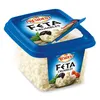

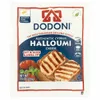
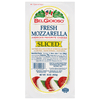

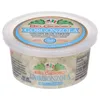


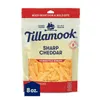
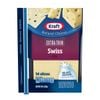
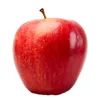

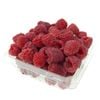
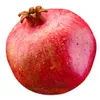
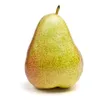
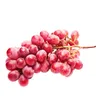


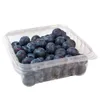
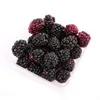


 Squash – All You Need to Know | Instacart Guide to Fresh Produce
Squash – All You Need to Know | Instacart Guide to Fresh Produce  Ghost Pepper – All You Need to Know | Instacart Guide to Fresh Produce
Ghost Pepper – All You Need to Know | Instacart Guide to Fresh Produce  Sprouts – All You Need to Know | Instacart Guide to Fresh Produce
Sprouts – All You Need to Know | Instacart Guide to Fresh Produce 

